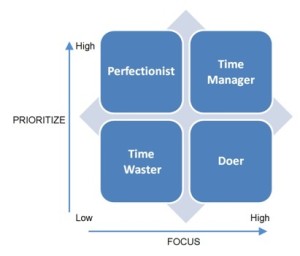Leaders cannot work in a vacuum. They may take on larger, seemingly more important roles in an organization, but this does not exclude them from asking for and using feedback. In fact, a leader arguably needs feedback more so than anyone else. ~Jack Canfield
 Sheila Heen, co-author of Thanks for the Feedback: The Science and Art of Receiving Feedback Well, says that we are swimming in feedback. Feedback is the “look” a co-worker gives us when we make a statement, how people respond to us in a meeting, how we’re greeted when we walk in the door, etc. Feedback is really “my relationship with the world and the world’s relationship with me.”
Sheila Heen, co-author of Thanks for the Feedback: The Science and Art of Receiving Feedback Well, says that we are swimming in feedback. Feedback is the “look” a co-worker gives us when we make a statement, how people respond to us in a meeting, how we’re greeted when we walk in the door, etc. Feedback is really “my relationship with the world and the world’s relationship with me.”
And we struggle with feedback! We not only struggle to receive feedback but we struggle to give feedback. And there’s a reason. We all have two human needs that many times conflict with one another. The first is the need to learn and grow. The second is the need to feel accepted and respected or loved the way we are now.
If leaders want to have a positive feedback culture in their organizations, Heen says the fastest way to change a culture is for leaders to become better receivers of feedback. Yes, that’s right better receivers, because the best givers of feedback are also the best receivers.
There are three types of feedback. 1) Evaluation, this rates or ranks you, it may be a performance review; it determines where you stand. 2) Coaching, this helps you to get better. 3) Appreciation, this is expressed by “I see you,” “I get you,” “You matter,” this is what motivates us.
Unfortunately, of the three, the one area that gets overlooked far too frequently is appreciation. Ninety-three percent (93%) of people in the workforce feel underappreciated. That tells me that the first step to creating a feedback-friendly culture is to significantly up your game on appreciation. The more we’re appreciated, the more likely we will be to accept the coaching and evaluation feedback. If you need a ratio, a significant amount of research has been conducted to determine that it takes at least 5 or 6 positive interactions for every 1 negative interaction in order to have an overall positive impact. Otherwise, we may very well be making the situation and/or relationship worse with our overabundance of evaluation and coaching in comparison to our appreciation.
A second step would be to change how you are asking for feedback (and you should be asking, often). If you’re simply asking, “Could you give me some feedback”? You’re making it both difficult and dangerous for the person to be honest with you. It’s kind of like sending someone off into a minefield; and both you and them hoping they don’t step on any mines.
Instead ask them for one thing. For example: What’s one thing you appreciate about…? What’s one thing you see me doing, or failing to do, that’s causing me to be less successful than I could be? And you could be even more specific like: What’s one thing you see me doing, or failing to do, when I conduct our staff meetings that may be causing those meetings to be less successful than they could be?
So start asking for feedback, because a leader arguably needs feedback more so than anyone else.



